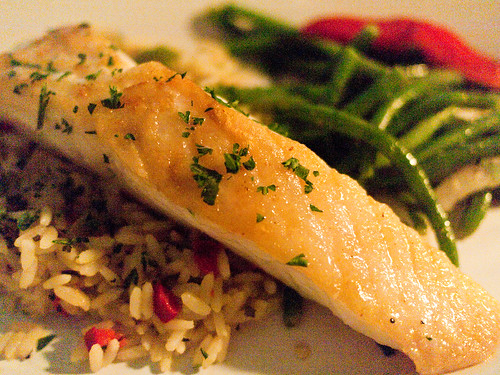
Image by Edsel Little via Flickr
For a foodie, the kitchen is where the heart is—and for an outdoor cooking aficionado, the campfire is nature’s kitchen where it all goes down—some delicious walnut-fried bass fillets, the smokey allure of the fire pit, the camaraderie around a blazing campfire… Mmm. Cooking freshly caught fish under a starry sky surrounded by majestic trees is euphoria. Before you set out on your next date with Mother Nature, use the following guide to create a gourmet meal after a day of fishing.
Pre-Cooking Pointers
Cooking over an open fire is a privilege. Pay attention to the fire and wind at all times. Air quality and forest fires are serious concerns for national parks and campsites. First, make sure to check and follow campground restrictions on open fires, just as you would obtain licenses for boating and fishing. To enjoy all aspects of Mother Nature also means to respect her.
Use dry and seasoned wood to create a hot fire that burns cleanly. Try to build the base of the fire on a rock or bare mineral soil. Also, strong wind is a hazard and provokes sparks that can cause a forest fire. An ideal fire burns all the wood into coals simultaneously. As a result, the fire burns evenly without overzealous flames that can torch the fish or blacken cookware. Select a site safely away from bushes or tree branches.
Pan-Fried & Boiled Fish
Once your fire’s ablaze, you can fry or boil the fish. Frying is the most popular and requires minimal tools. You’ll need cooking oil, a cooking grate, spatula, pan, and breading (optional). After cleaning, cut your fish into fillets and bread them if you like. Heat the oil in the pan on the grate. Flip fillets often to ensure they don’t burn. Cooked fish will have a golden brown breading, be a shiny white color and flake easily.
Boiling fish is the purist cooking method. Start by boiling a pot of water over the fire and add cleaned, gutted dish to the pot. If the meat flakes when poked with a fork, it’s fully cooked. Sprinkle seasoning or melt butter over top and enjoy.
Wild Leaf Accents
An outdoor cooking connoisseur knows the fish-cooking basics, but he’ll put on a chef’s hat in the woods to create mouthwatering meals to impress his buddies. Go natural to flavor your fish fillets by wrapping fish in wild leaves. The Clymb lists the following as edible favorites:
- Palm leaves
- Banana leaves
- Reed leaves
- Corn husks
- Grape leaves
Leaves from linden, walnut, sycamore, chestnut, oak and maple trees, as well as wild garlic, hibiscus and ramps, are also good to wrap food in. Trout wrapped in walnut leaves paired with wild garlic leaf-wrapped cheese creates a tasty meal. Use wet twine to secure the wild leaf fish fillets and toss them onto the coals. You can also fold long leaves around the fish and place the fish onto the coals folded-side down. Sinking your teeth into a coal-charred fish fillet wrapped in earthly goodness may just be the highlight of your camping experience. Don’t forget to wash it down with a cold beer.


